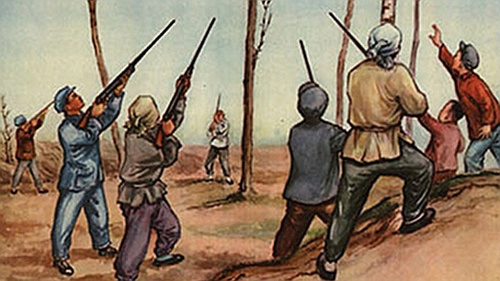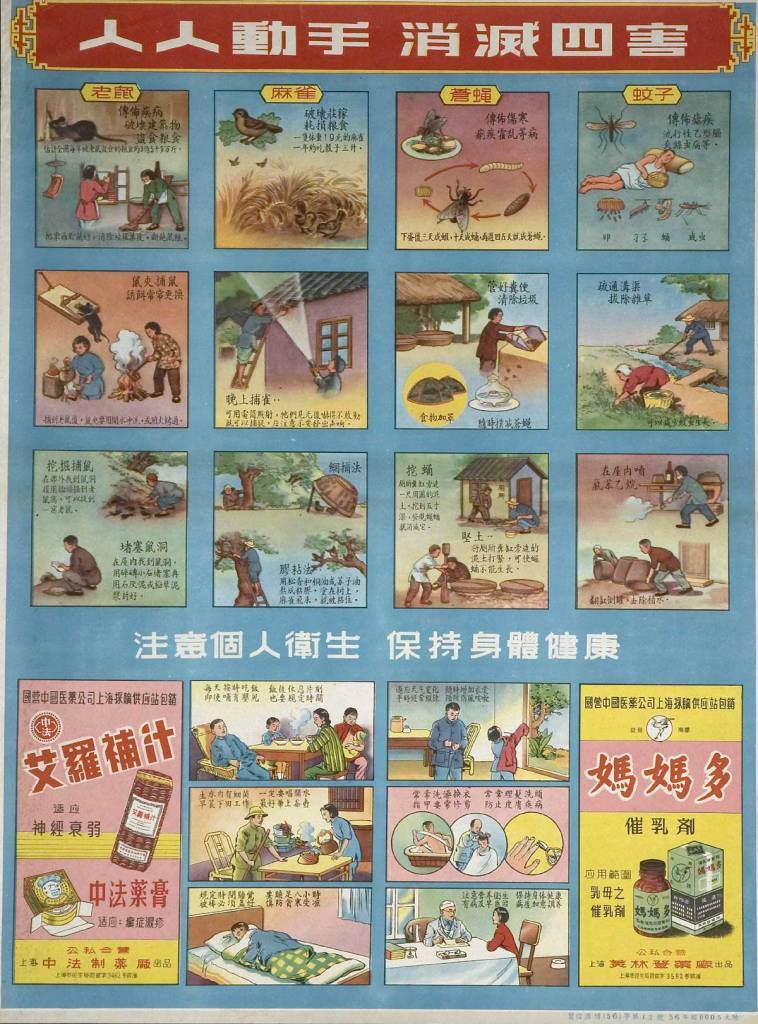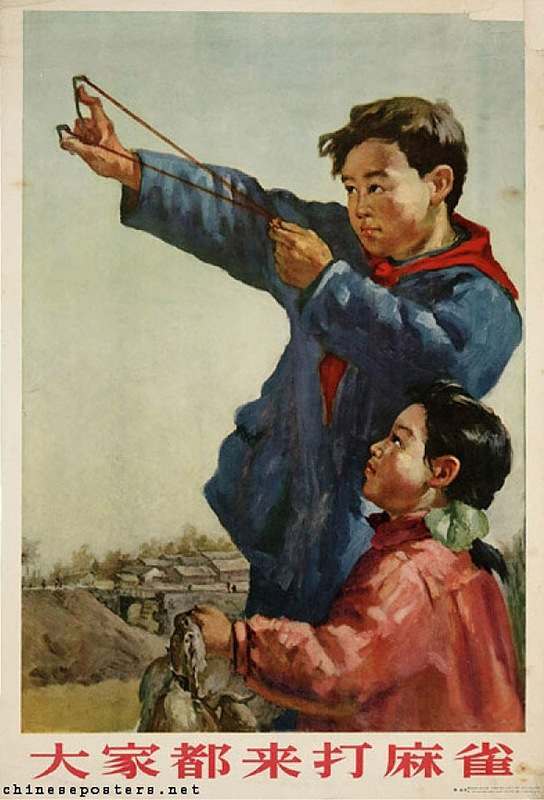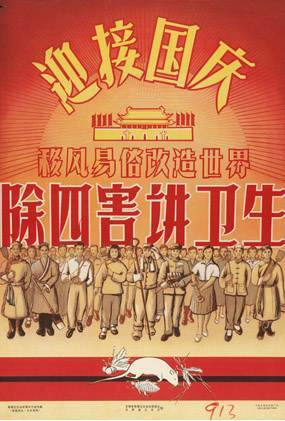“Damned Creature. Criminals for thousands of years. Today’s payment day”
– Chinese anti-sparrow poem
In 1958 China wanted its sparrow population dead. As part of dear leader Mao Zedong’s Four Pests campaign for improved public health, the Chinese would exterminate all mosquitoes, flies, rats and sparrows.
Mao had made his selection. Panda bears, worms and even the dreaded moth would be allowed to thrive. His murderous hatred of sparrows held sway. The people would be mobilised for the huge cull on an enemy of the common good.

“Exterminate the four pests!” A 1958 poster by Ding Hao. Image: International Institute of Social History/Stefan R. Landsberger Collections. Via
The birds’ problem was that sparrows are enthusiastic eaters of grain seeds – each bird consuming an average of 4.5kg of grain each year (source: China’s sparrow scientists). The maths was simple: kill 1m sparrows and save enough food to feed 60,000 humans.
China had experienced terrible food shortages.
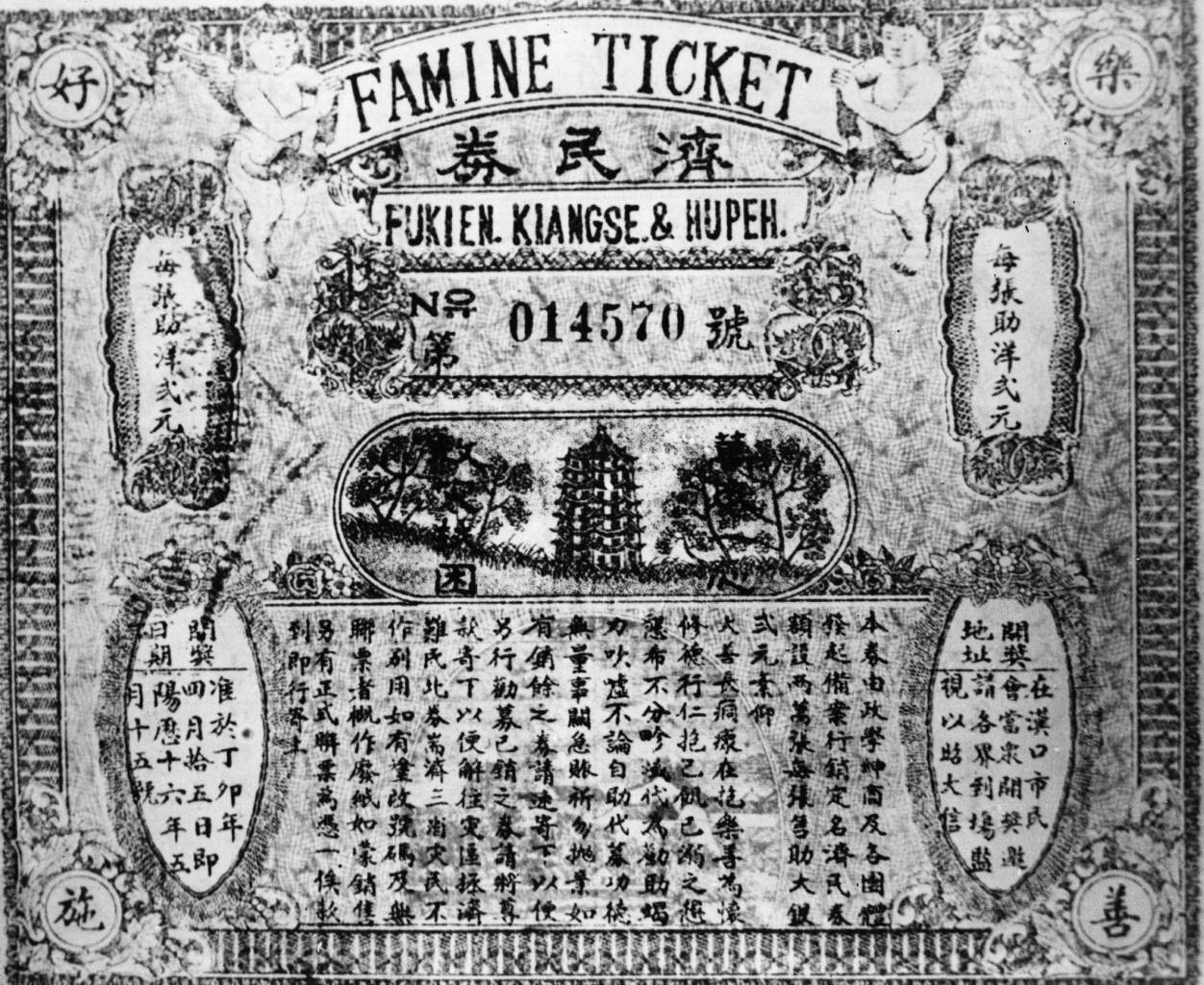
1927: A famine ticket, circulated amongst the Chinese in Shanghai by Chinese Communists during a period of mass starvation. The tickets state that the British are responsible for the famine. (Photo by Keystone/Getty Images)
Mao wanted to drag China into the industrial age.
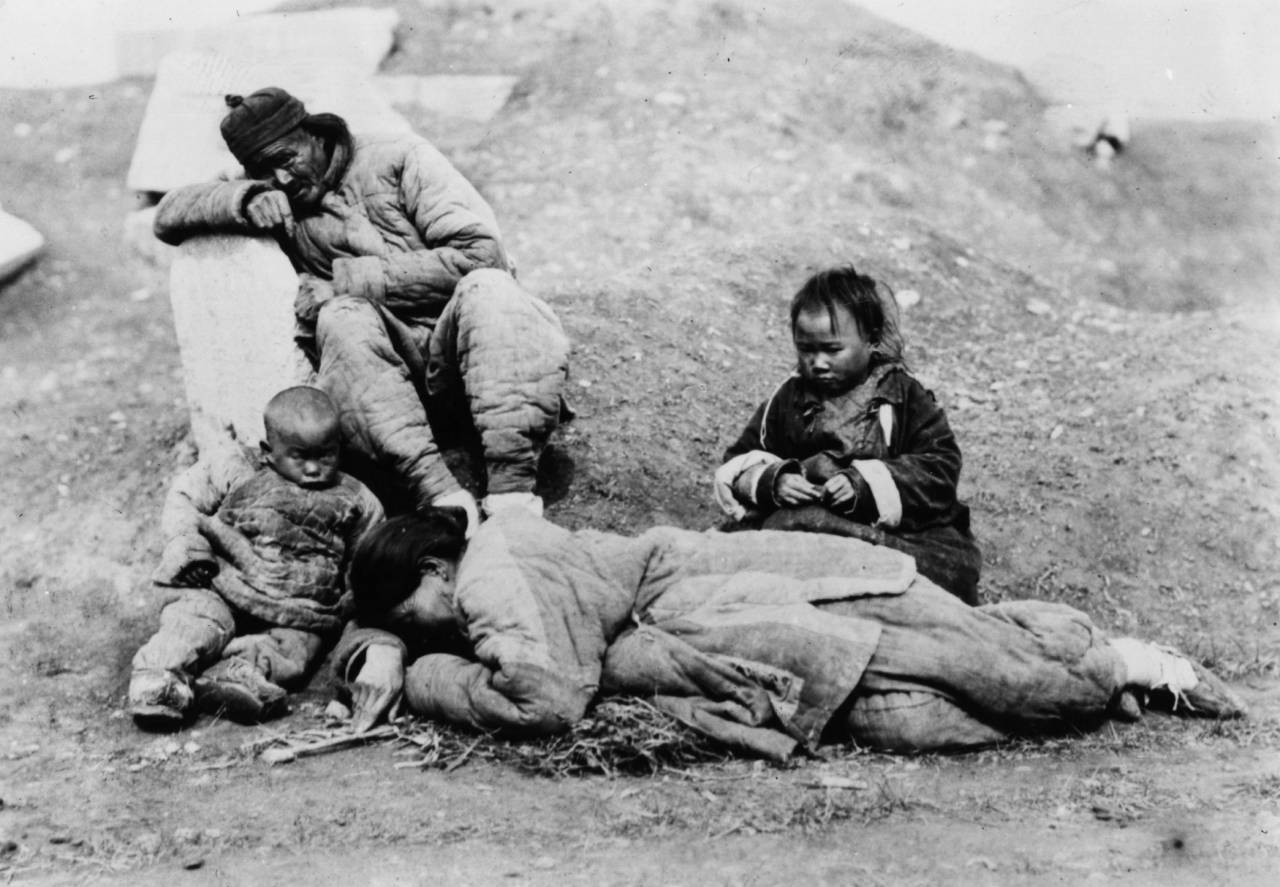
Typical famine victims in China. A man grieves while children look at dying mother. (Photo by Topical Press Agency/Getty Images)
Productivity targets were set (but rarely met).
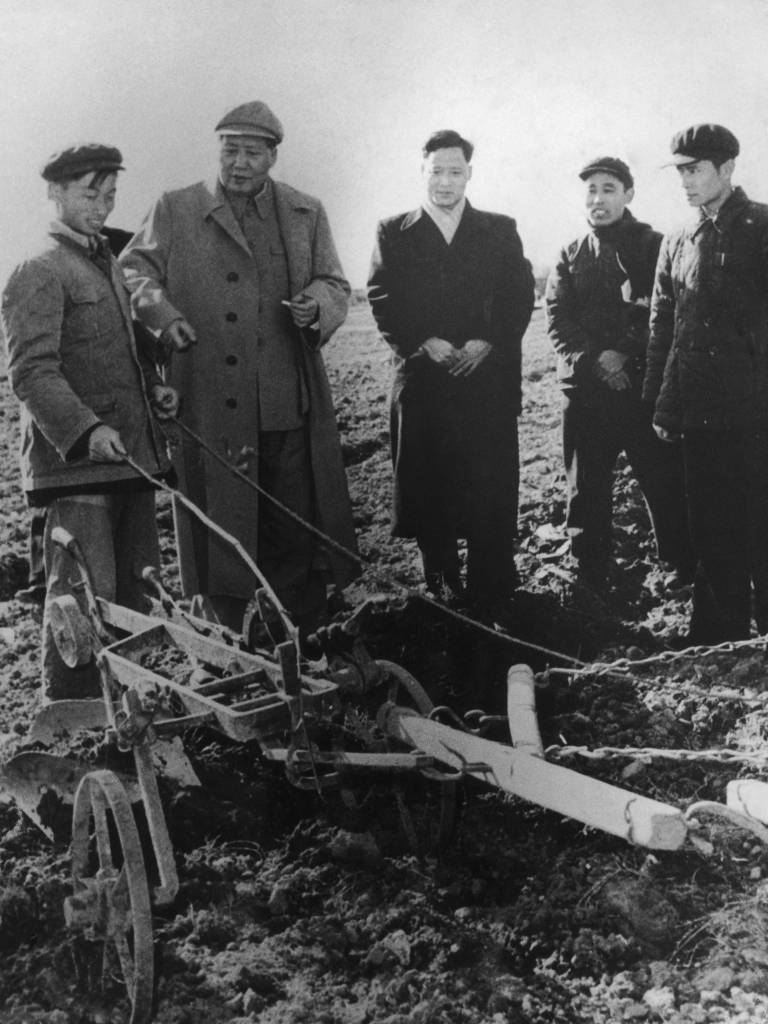
Chinese Communist Party Chairman Mao Zedong (1893 – 1976, second from left) visiting farm workers to congratulate them on production figures at their agricultural institute in Zhejiang, China, 9th February 1958. (Photo by Keystone/Hulton Archive/Getty Images)
China would bloom.
The war on small feathery animals was spread by word of mouth, newspapers…

People reading ‘dazebao’ news which has been pasted on to a street wall in China. A banner spanning the top reads, ‘Long Live Chairman Mao’. (Photo by Richard Harrington/Getty Images)
…and posters.
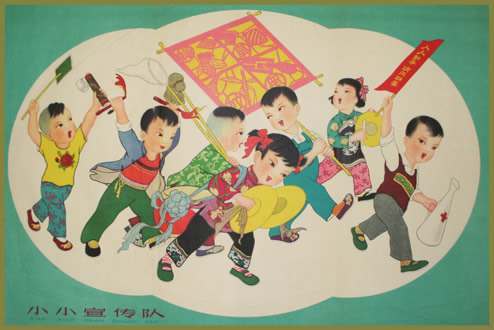
Four pests poster for children, 1961. Courtesy National Library of Medicine. Via
There was a game for all the family.

Four pests game, ca. 1960
Courtesy National Library of Medicine
One of the largest campaigns targeted the “four pests”—rats, flies, mosquitoes and grain-eating sparrows. With almost three-quarters of the population unable to read or write, to be effective these health education campaigns needed to provide critical information in an easily understandable format.
So how do you wipe out sparrows? The Chinese made a lot of noise. They shook trees. They stood outside, and bashed on pots and pans, screamed and shouted. They would keep the sparrows at bay and airborne. Fearful of landing, the birds would be unable eat, grow exhausted and die. The Chinese would also hunt them down, smashing nests, crushing eggs, stomping on chicks and shooting them with slingshots and guns.
This mass participation worked.
Hundreds of millions of sparrows died. According to DM Lampton in Public health and politics in China’s past two decades. Health Serv Rep. (1972) “1 billion sparrows, 1.5 billion rats, 100 million kilograms of flies and 11 million kilograms of mosquitos” were wiped out.
The Shanghai newspaper reported:
The whole city is attacking the sparrows
On the early morning of December 13, the citywide battle to destroy the sparrows began. In large and small streets, red flags were waving. On the buildings and in the courtyards, open spaces, roads and rural farm fields, there were numerous scarecrows, sentries, elementary and middle school students, government office employees, factory workers, farmers and People’s Liberation Army shouting their war cries. In the Xincheng district, they produced more than 80,000 scarecrows and more than 100,000 colorful flags overnight. The residents of Xietu road, Xuhui district and Yangpu road Yulin district also produced a large number of motion scarecrows.
In the city and the outskirts, almost half of the labor force was mobilized into the anti-sparrow army. Usually, the young people were responsible for trapping, poisoning and attacking the sparrows while the old people and the children kept sentry watch. The factories in the city committed themselves into the war effort even as they guaranteed that they would maintain production levels. In the parks, cemeteries and hot houses where there are fewer people around, 150 free-fire zones were set up for shooting the sparrows. The Nanyang Girls Middle School rifle team received training in the techniques for shooting birds. Thus the citizens fought a total war against the sparrows. By 8pm tonight, it is estimated that a total of 194,432 sparrows have been killed.
With the sparrows dead, insect life boomed. The locust had never had it do good. Crop eating bugs that would have augmented a sparrow’s lunch ravaged the grain harvest. Crop yields were lower than they had been when sparrows held sway.
Mao went back to his hit list. Sparrows, he decreed, were now alright. Bed bugs were the real problem.
And those thriving locusts were no good. To control them, Mao went shopping in the Soviet Union for – yep – sparrows, begging the comrades for 200,000 replacement birds.
It was a disaster. The voracious and rife insects’ feeding frenzy caused widespread deforestation. The misuse of poisons and pesticides all contributed to the Great Chinese Famine (1958-1961) in which an estimated 30 million people died of starvation.
And the birds waited.
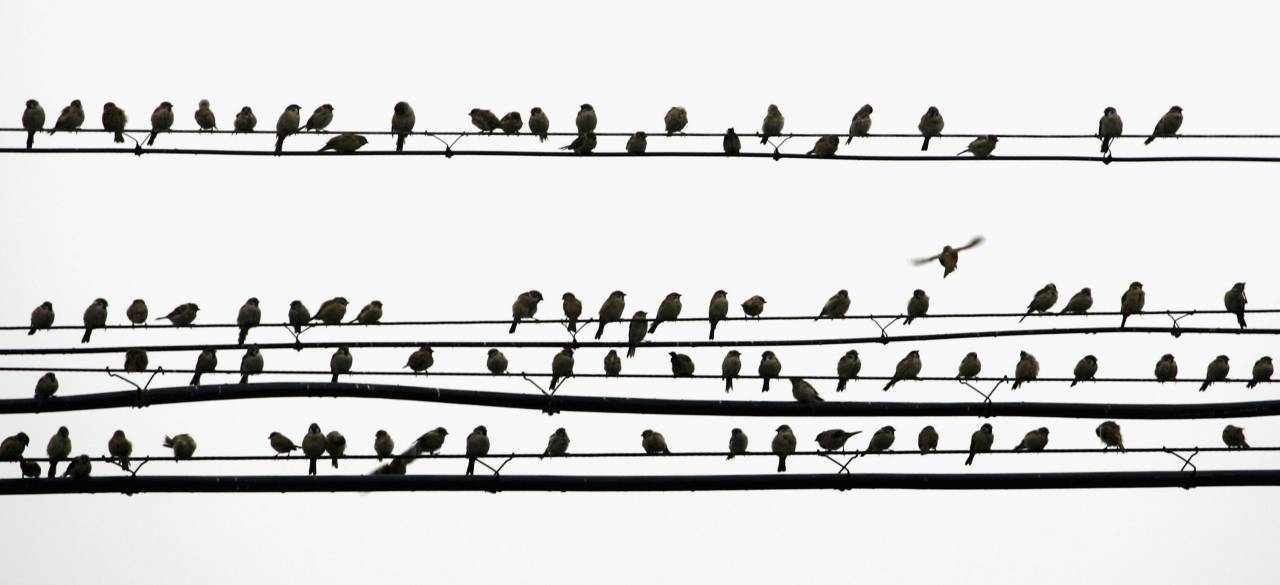
Sparrows perch on electrical wires near a paddyfield at Jiaodai Township on September 15, 2005 in Lantian County of Shaanxi Province, China. The ripe paddies have attracted a lot of sparrows during the ongoing harvest season, according to local media.
Would you like to support Flashbak?
Please consider making a donation to our site. We don't want to rely on ads to bring you the best of visual culture. You can also support us by signing up to our Mailing List. And you can also follow us on Facebook, Instagram and Twitter. For great art and culture delivered to your door, visit our shop.
